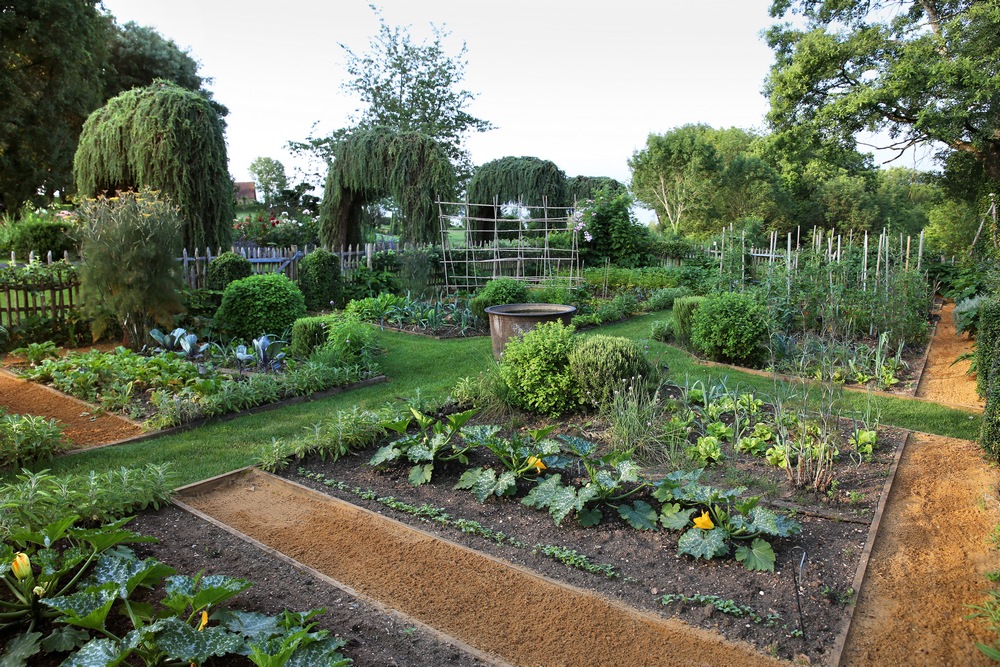Design a Potager
- 2023-07-02
- By mkirk
- Posted in Horticulture, The Garden Buzz
By Kathi Thistlethwaite, Colorado Master Gardener
Design a what? A potager (pow·tuh·jay), is a kitchen garden, taken from the French “jardin potage” or soup garden. Potagers have been a part of historic estates, country homes, and informal cottage gardens throughout history in France and many other cultures. In addition to incorporating basic garden design elements, the potager is a beautiful mixture of vegetables, fruits, herbs and ornamentals. It is artistic and functional at the same time.

Here’s how to create a potager:
- Start small. Any size plot works for a kitchen garden. This includes containers. There are many vegetable and fruit varieties suited to small spaces and containers.
- Choose the right location. Sunlight and water will be the primary factors in selecting a location for the potager. The traditional location for a potager is near the kitchen, but any location with adequate sunlight for growing vegetables and ornamentals will do.
- Plant lots of herbs. Herbs are easy to grow and many are perennial. Allow them to flower to attract pollinators.
- Include ornamental plants. Consider easy-to-grow nasturtium, calendula or sunflowers. These varieties are edible and will attract pollinators. Imagine a potager lined with colorful nasturtiums and sprinkled with calendula. The flowers chosen for a potager don’t have to be edible, just the gardener’s favorites.
- Define the space. A framework of raised beds, fences, the border of nasturtiums all give the potager a sense of protection, privacy and intimacy, some of the garden’s key features.
- Create pathways. Paths make maintenance easier while protecting the soil from compaction. Even in a small potager, a few stepping stones provide a place to stand and add definition.
- Add garden structures. Structures like a trellis, cages, and towers add height to the potager. They are available in many sizes and designs and can even be added to containers. Growing vertically will also increase use of available space.
The idea of the potager has taken root in the Denver area. Visitors at the Denver Botanic Gardens can see a working potager for inspiration and information. Le Potager (botanicgardens.org). Master Gardeners maintain a potager at Hudson Gardens. Flowers are incorporated into several of the 23 raised vegetable and herb beds. These include giant sunflowers, nasturtium and calendula. Herbs are allowed to flower, attracting pollinators. Garden visitors say they enjoy the variety and now many are interested in creating a potager at home. Consider adding a small potager garden to the landscape. It’s simple to do. An artful and functional garden awaits.
Horticulture Resources
- Garden Buzz Archives
- CSU Extension Resources
- Colorado Master Gardener Program
- Foothills to Plains Native Plant Master Program
- Native Bee Watch Community Science Program
- The Co-Hort Blog
- PlantTalk Colorado
- Soil Testing
- Plant Select
- Emerald Ash Borer
- Japanese Beetle
- Colorado State Forest Service
- Ask an Expert


